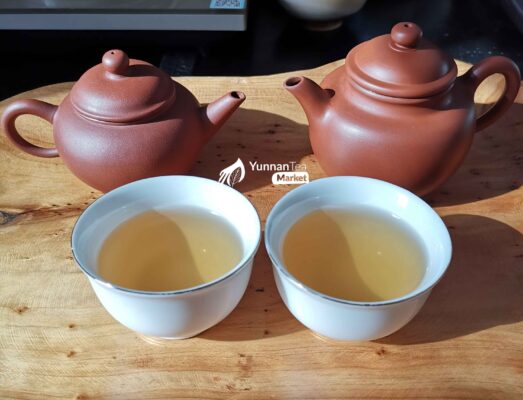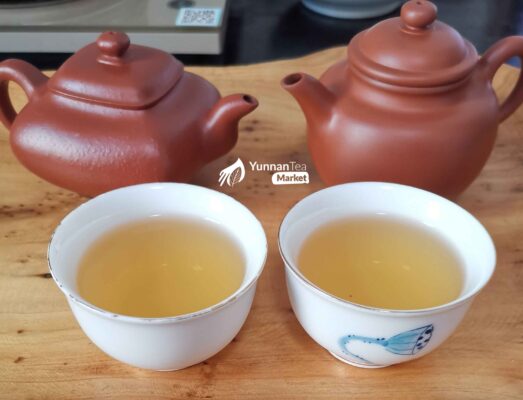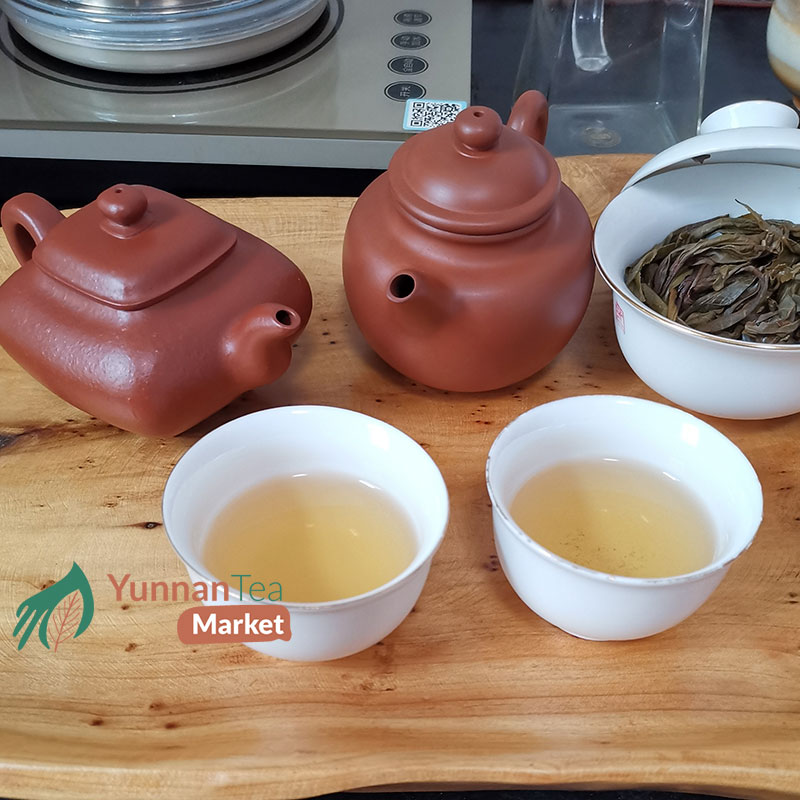Jian Shui Zi Tao, Zisha
Comparing Brewing Results: Zitao, Porcelain and Zisha.
In another post, I wrote more in detail about the features of Jianshui Zitao. So if you are interested to learn about those, first read this post About Jianshui Zitao Pottery
In this post, I will only write about the brewing results between porcelain, Zitao and Zisha to see how they compare.
Gaiwan versus a Zitao teapot
Tea used in all tests: A 2020 Sheng Puer Tea (4 grams of tea)
Temperature: 100°C
Brewing time: 1 minute (long brewing time to accentuate the characteristics of the tea.)
First, I preheated all the tea vessels to help preserve the higher notes in the aroma, accentuating their differences when comparing.
After that, I brewed the tea leaves inside the glazed Gaiwan.
Then pour some of that tea into a pitcher.
After that, pour some of that tea into the teapot.
Left some tea in the pitcher to compare against the teapot.
In this way, I compared what effect the clay has on the tea versus the one in the Gaiwan that brews a neutral tea soup.
The result:
The tea brewed in the Gaiwan had more aroma and sharper taste. It was also more bitter and astringent than the teapot.
The teapot rounded the bitter edges of the tea, slightly reduced the astringency and gave a thicker mouthfeel to the tea soup. But the tea soup has less taste and aroma.
Hongni Zisha teapot versus a Hongni Zitao teapot

Note: click on the image if you want to check this Hongni Zitao teapot.
This test had the same parameters as the previous test.
As before, I brewed the tea leaves inside the glazed Gaiwan.
Then pour some of that tea into a pitcher.
Next, pour the tea into each teapot and from the teapots into the teacups.
The result:
The tea brewed on the Jianshui teapot had a higher aroma, taste-wise was more bitter and astringent than the one in the Yixing Hongni pot, which did better in rounding up the bitterness and astringency.
But again, the tea soup has less taste and aroma. I would say mouthfeel wise they are similar.
Yixing Zhuni pot versus Hongni Zitao pot

Note: click on the image if you want to check this Zhuni teapot.
Parameters and brewing method are the same as before (brewed the tea leaves in a Gaiwan).
The result:
Regarding the aroma of the tea, Jianshui did a better job enhancing the higher notes.
But the difference was not as big as when I compared it against the Hongni.
The Zhuni was superior in taming the bitterness and astringency of the tea.
However, in this regard, I also feel that the difference is more subtle than when I compared the Hongni against the Zitao pot.
Mouthfeel wise, same as the previous test. No significant difference.
Conclusion about comparisson
To conclude, Zisha and Zitao are different; this doesn’t mean that one is better than the other.
Clay is just a tool; as long as the clay is good (pure with no chemicals) and you pair it with a tea that matches, you will benefit from its use.
Zisha clay is more porous than Zitao. It will do better to tame unwanted flavours and astringency.
Zitao clay has a higher density and is less porous. So It will do a better job preserving aroma and enhancing the flavours more than rounding them up when compared to Zisha.
However, will definitely tame some undesired flavours when compared to porcelain.
I have tried different Oolongs, Puer tea (semi-aged and aged), White tea, Heicha and our Yesheng Gushu Red Tea with good results.
I don’t recommend Zitao for Green teas or young Sheng Puer teas with high bitterness and without a decent amount of return sweetness. The density of the clay and its long heat retention (high heat capacity) will increase the bitterness of these teas.

